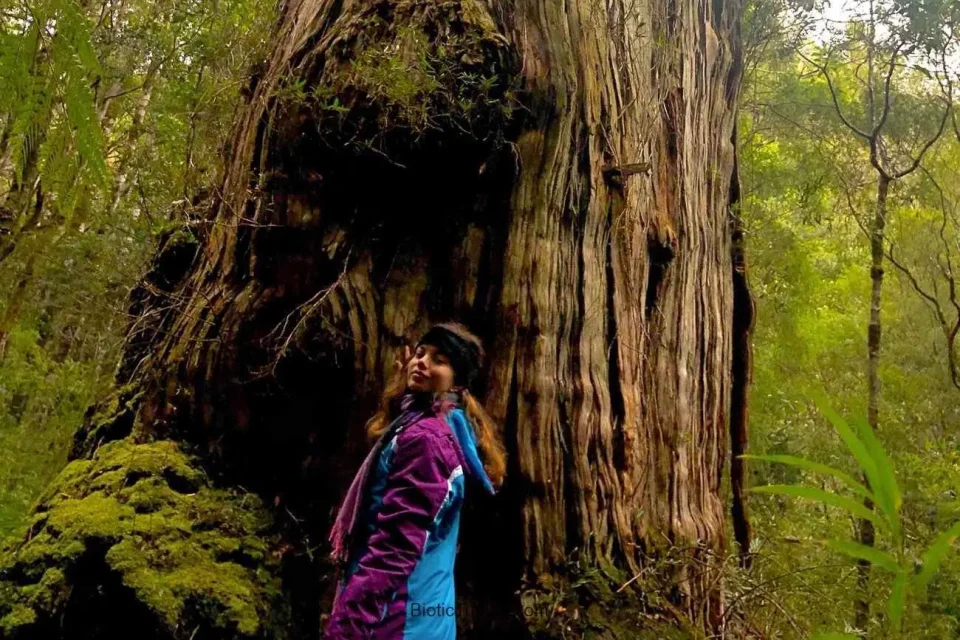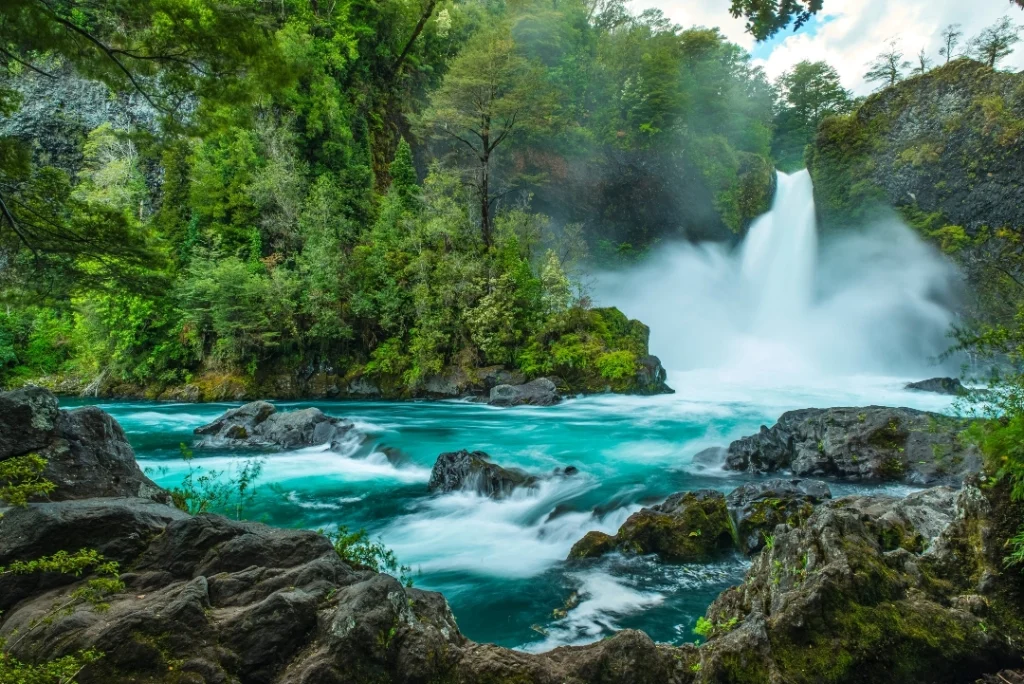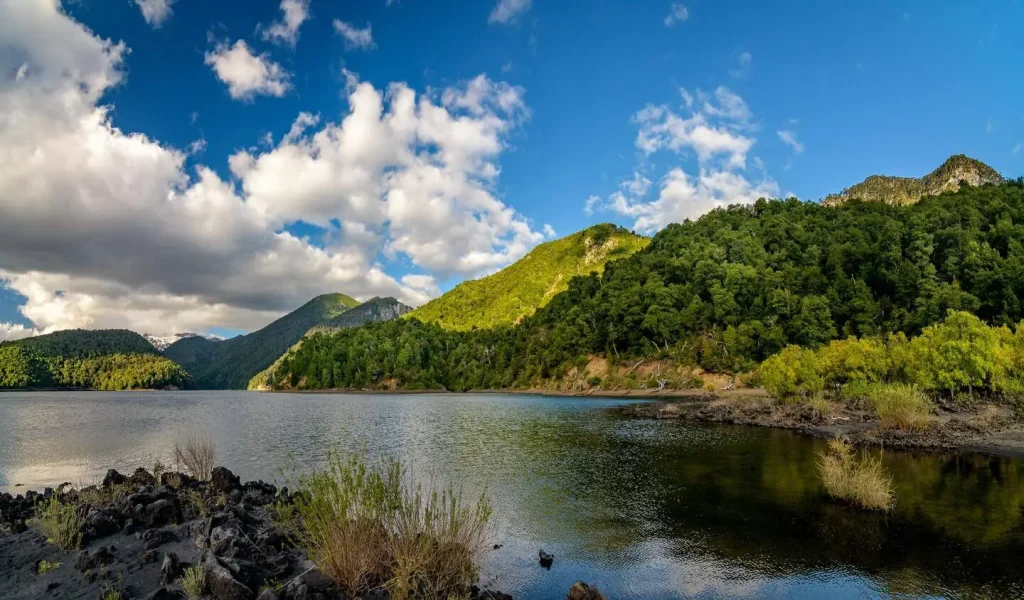Valdivian Rainforest: Chile’s Unique Temperate Biodiversity

Located in the Southern part of Chile is an unnoticed marvel, The Valdivian Rainforest. Visitors to this lush and teeming region are captivated by the stunning array of life in a vibrant ecosystem covering more than 248,000 square kilometers. In stark contrast to the tropical rainforests which people typically think of, the Valdivian Rainforest is a temperate forest that enjoys an peculiar kind of climate making it rather distinct.
Chile is known for its rich and diverse mix of geography – from the Atacama Desert in the north to Patagonian landscapes further south, Oregon rainforest regions covered effortlessly(gulp!) down into Santiago’s wine region(esque) soils. Despite this, the Valdivian Rainforest remains a shining example of the extreme diversity across Chile. This temperate rainforest perched in the Andes Mountains and Cascades near the Pacific Ocean, harbors an astonishing biodiversity not found anywhere else on our planet.
In these forests we find a living museum of how species have evolved and thrived in this ecosystem for thousands or millions of years. The moderate temperatures, adequate rain fall and abundance of fog makes it home to a wide range species living in harmony which explains its remarkable biodiversity making the Temperate Rainforest one the most complex ecosystems if not THE for every specie has an important role preserving such delicate ecosystem. The more we explore the Valdivian Rainforest, the learn about facts and treasures this natural wonder holds.
Article Contents
- 1 The Valdivian Rainforest Vegetation and Wildlife
- 2 Relevance for Conservation of the Valdivian Rainforest
- 3 Valdivian Rainforest: Threats
- 4 Measures and Projects for the Conservation of Valdivian Rain Forest
- 5 Valdivian Rainforest: National Parks and Reserves
- 6 Valdivian Rainforest Sustainable Tourism Solution
- 7 Valdivian Rainforest Studies and Research
- 8 Author
The Valdivian Rainforest Vegetation and Wildlife
The Valdivian Rainforest is a real paradise of biodiversity, fulfilling its function as shelter for an endless variety of plant and animal species. These ancient trees that loom above the forest canopy, which extends up into the warm and wet air, while down in its quivering shadows kittens tiptoe through undergrowth this ecosystem is a living symbol of life’s will to survive.
They also show off that the Valdivian Rainforest boasts one of the largest numbers of tree species. The forest is largely formed of large, broadly spreading centuries-old Nothofagus trees which can exceed 50 m in height. The living remnants of this forest — ancient giants that are a part of the so-called ‘southern beech’ family and which act as a link to the long history Gondwana supercontinent here — have covered these remote isolated islands for thousands, if not millions, years. Other trees conifers among the rainforest of, including extremly fragant Chilean laureltree tall Alerce (closely relatated to Redwood) and red-mottled bark Mañío.
The understorey of the Valdivian Rainforest is a vibrant green that consists primarily of layers and plates composed by ferns, mosses (some are 1-1.5 m) and epiphytes pubs valley. The plants of the forest floor in particular, well suited to low-light conditions, only add to the magical quality the ecosystem possesses. Additionally, the presence and abundance of such species makes them an indicator for the health status of this rainforest as they are also susceptible to changes or degradation in their environment.
Yet the real show-stoppers at this premier of life are its extraordinary fauna. This ecosystem is full of unique species, from the elusive pudú deer —the world’s smallest deer— to the massive Andean condor,the largest flying bird in Western Hemisphere. The Darwin’s fox is highly endangered and only inhabits the Valdivian Rainforest (and a few of its enviroments), one more example of this unique biodiversity. The Grey Fox This little grey-furred canid is a fantastic example of evolution in this temperate rainforest.
The little-known owl is another of the enigmatic denizens of the Valdivian Rainforest, and as yet scientists have not been able to definitively identify this species. Researcesshortly and enthusiasts have long dreamed osecrets the pieces amidst its own elusive existence, unraveling of this enigmatic bird with intriguing song.
Amphibians, reptiles and insects are also important to this ecosystem as they have been for years contributing along with many other animals of the food chain. Every species, from the bright Darwin’s frog to the lace-winged insects that dart through its canopy-all feed into both richness and resilience of a Valdivian Rainforest.

Relevance for Conservation of the Valdivian Rainforest
The Valdivian Rainforest is an ecological hotspot, a wonder of nature and one that has proven to be indispensable when it comes to conserving biodiversity. It is a coastal temperate rainforest, the only one in North America and it has unique albeit increasingly rare ecosystems with as many endemic species and families of plants(800) than tropical jungles.
Another of the Valdivian Rainforest’s points in favor is that there are species in extinction and more threatened which find a refuge chance”>
And both individually and as a whole, the Valdivian Rainforest also plays an important role in absorbing carbon from the atmosphere to combat climate change. Ancient, long-lived trees and the deep organic soil of the rainforest are sealing away enormous stores supplanting carbon for millions year that play a vital role in stabilizing global climate. The preservation of the Valdivian Rainforest is not merely a local issue but an international obligation in the battle against climate change.
Acting as a living cultural space for centuries are the strong and enduring woods of Valdivian Rainforest, where reside sedentary indigenous Gente Da Evolucao (the natural evolved): Mapuche folks. The rainforest is sewn into their traditions, beliefs and to them represents a source of sustenance as well biological medicine box, indeed spirituality. Saving the Valdivian Rainforest is not only a pragmatic way to protect one of Earth’s last intact ecosystems but preserving it also means rescuing centuries-old, ancestral cultural traditions that are integral parts of Mapuche identity.
The Valdivian Rainforest is a UNESCO World Heritage Site and has been recognized at the international level for their outstanding universal value, both in terms of ecological as well cultural heritage. This status has brought increased attention and action, but much remains to be done. These relentless stressors, along with emerging threats like the effects of climate change on habitat suitability of human-induced triplecups and vertebrates species inhabiting tropical forests amongst others1 reinforce controlling strategies for comprehensive conservation to divert Valdivian Rainforest facing extintion.
Valdivian Rainforest: Threats
The Valdivian Rainforest is facing an onslaught of threats, despite all ecological and cultural that the forest possesses. Given this, understanding these threats is central to devising strategies that minimize their impacts on this vulnerable temperate system.
Deforestation is one of the biggest threats in Valdivian Rainforest. The timber resources of the region, especially with regard to ancient Alerce trees (incidentally in favor at that time for building masts) led to a significant focus towards logging and land conversion within the rainforest. The Valdivian Rainforest has been under constant pressure from unsustainable forestry practices, combined with the expansion of agriculture and urban development causing continuous loss, degradation and fragmentation.
The effect of invasive species is another major threat to the Valdivian Rainforest. Non-native species can displace local plants and animals, either by competing with them for food or habitat disrupting the complex balance of forest life which has evolved over millions of years. Invasive species like the European wild boar and Patagonian mara have decimated many of Valdivia Rainforest endemic wildlife, causing populations vulnerable to decline.
The region is also highly threatened by climate change and poses a serious risk to the conservation of Valdivian Rainforest. Its temperate climate which has maintained the ecosystem for hundreds and millions of years, is now in grave danger due to temperature rise at a global scale. The result can cause untold damage to the Valdivian Rainforest, with widespread droughts disasters and pest outbreaks following in its wake potentially leading to mass extinctions of irreplaceable species as well as damaging vital ecosystem services.
The Valdivian Rainforest is susceptible to mining and hydroelectric power generation. Copper and other mineral extraction, dam and hydroelectric projects can also severely damage the forest by fragmenting habitats, disrupting water cycles and threatening its delicate ecosystem.
Addressing these threats must be approached on a number of fronts with collaboration amongst government agencies, environmental groups as well as indigenous and private sector partners. Long-term efforts to save the Valdivian Rainforest include sustainable forestry practices, eradication of non-native plants and animals that spread through habitat alteration (invasive species), adaptation strategies in response to climate change, as well as enforced regulation of resource extraction industries and development projects.
Measures and Projects for the Conservation of Valdivian Rain Forest
Due to the importance of one of its subtypes, majority groups are promoting initiatives and projects for conservation. Whether at the grassroots level or within international agreements, immense dedication to saving Valdivian Rainforest attests its place on globe scales.
The main project is to enhance the Valdivian Rainforest through a number of conservation areas. Alerce Costero and Puyehue national parks are preserves of some (but certainly not all) of the region’s pristine lands. It has not only become the sanctuary for endangered species as well they have made possible sustainable tourism and environment education.
Private ConservationThe establishment of national parks is not the only private conservation initiative that works in acquiring and protecting threatened areas of Valdivian Rain forest. The Valdivian Coastal Reserve and Pumalín Douglas Tompkins National Park have helped ensure that some of the most important habitats in Chile will be here to delight future generations.
In addition to safeguarding the Valdivian Rainforest’s physical protection, initiatives have focused on sustainable forestry management and resource stewardship. Certification programs such as the Forest Stewardship Council (FSC) increase the percentage of harvested trees that are cut in a socially responsible, environmentally conscious manner, thereby guaranteeing BCs precious supply of wood resources is being replenished.
Scientists from around the world have indeed come together to study this unique ecosystem more about Valdivian Rainforest The native species in this area and the influence of climate change on them from these studies, along with investigating traditional ecological knowledge held by Mapuche people are helping to shape improved conservation approaches.
A key aspect of the conservation effort to save the Valdivian Rainforest is that it requires significant involvement and protection by the local indigenous communities Mapuche. These Native Americans have historical ties to the land and it is essential their cultural heritage be preserved as well as protecting their future access, which in most cases depends on natural resources.

Valdivian Rainforest: National Parks and Reserves
There are dozens of national parks and reserves that protect the incredible beauty and biodiversity of this forest — to understand for yourself, you can come here.
Indeed, the Valdivian Rainforest is famous for its huge Alerce trees (an endemic to south-central Chile), and one of the most well-known spots within this forest type is indeed a UNESCO World Heritage Site called Alerce Costero National Park. A visit here is like stepping back in time into a cool temperate rainforest with old growth mossy trails among the largest and oldest trees you may ever see.
This is one not to be missed, along with visits to Puyehue National Park and its beautiful Osorno Volcano or ecosystem between crystalline lakes, primeval forests-density- of cold. Hikers can challenge strolls up to the well of lava, which will repay them with incredible perspectives on The Valdivian Rainforest and various Andes mountains.
The Valdivian Coastal Reserve also provides an opportunity for hands-on exploration of the coastal habitats associated with this rainforest. Hikers can wend through the verdant, temperate forests here—keeping an eye out for endemic species like pudú deer and Darwin’s fox—or head down to rocky shores where marine life thrives in the nutrient-rich waters.
Another gem in the Valdivian Rainforest is the Pumalín Douglas Tompkins National Park, created thanks to late philanthropist and conservationist Douglas Tompkins. With protections extended over most of North Olney now we have a vast, protected area through which a mosaic of ecosystems travels: from the towering ancient forests to pristine glacial landscapes visitors encounter an extensive experience in one and only biggest biodiverse temperate rainforest nonetheless on Earth.
In addition to serving as outdoor recreational and natural areas, these parks are also critical scientific research grounds for the study of people and nature. Travelers have the opportunity to walk through its many trails with local guides, while learning about one of a kind ecology and indigenous cultures in this particular region; contributing therefore towards preserving Valdivian Rainforest for generations to come.
Valdivian Rainforest Sustainable Tourism Solution
The sustainable tourism in this natural wonder, the Valdivian Rainforest”, just started to spread around and add more importance for its preservation. Such practices are contributing to a more sustainable future for the region, cost sharing benefits relevant stakeholders such as local communities and conservation organization which must strike up based on imperative need of economic development vis-a-vis protecting rain forests delicate ecosystem.
Low-impact, nature-based activitiesLong before sustainable tourism became popular, the pillars it rests upon in Valdivian Rainforest Ecolodge are a matter of fact. The jungle itself attracts visitors who want to experience what it has to offer while leaving the lightest possible touch, and hiking bird watching and wildlife viewing are good ways of doing this. Local guides give guided tours on the area’s unique flora and fauna as well as about indigenous culture and conservation.
Ecotourism projects, such as the construction of eco-lodges or sustainable lodging proposals have also become more frequent in Valdivian Rainforest. They are built and operated using renewable energy, they store rainwater for watering the estate gardens and manage all waste so that your holiday is both luxurious as well as more responsible to environment.
In addition to the economic advantages that lead us directly, also is important as a sustainable tourism industry in fatcai login contributes awareness and acquires love for preserve rainforests both among local communities and tourists. Travelers who form a bond with the rainforest’s natural and cultural heritage may be more inclined to raise their voices in its defense, backing conservation initiatives and spreading awareness about global imperatives for preserving this precious ecosystem.
This World Heritage Site status has also helped put the Valdivian Rainforest on the map, making it a highly popular destination amongst eco-conscious travelers. The World Heritage status has seen increased visitation, calls for ecotourism infrastructure that would allow tourism without damage and encouraging genuine best-practice protection of the natural resources in the long-term.
With increasing calls for sustainable tourism, the region is indeed set to lead as an example of how travel and conservation can go hand in hand — with success. Local communities are working with conservation organizations to strike a balance between economic development and environmental protection, so that the Valdivian Rainforest continues as climate resilient on into the future.
Valdivian Rainforest Studies and Research
The Valdivian Rainforest is one of the few temperate rainforests in existence and it has been studied for years due to its unparalleled biodiversity. Some of the findings ranged from studying plants endemic to the area, all while providing us a glimpse into ancient evolutionary history – proving that even in 4 percent of our world’s landmass we continue discovering something new and important about it.
Study of its endemic flora and fauna is one of the main research works carried out in Valdivian Rainforest. The region’s endangered and enigmatic creatures like the “owl of Minerva” owl, or Darwin outbound fox provide links to understanding how evolution has shaped the rainforest not just over millions of years but in a dynamic interplay between thousands upon species throughout.
They are also investigating the deep past to see how geological and climatic conditions have given rise this fascinating mist shrouded temperate rain forest over millennia. Fossil record in the region and soil/sediment composition have helped scientists unravel more about how these Amazon rainforests are created;these being linked to Gondwana supercontinent chronologies and overall global biogeographic patterns.
Also read: The Breguet Grande Complication Marie-Antoinette: A Historical Marvel in Timekeeping
